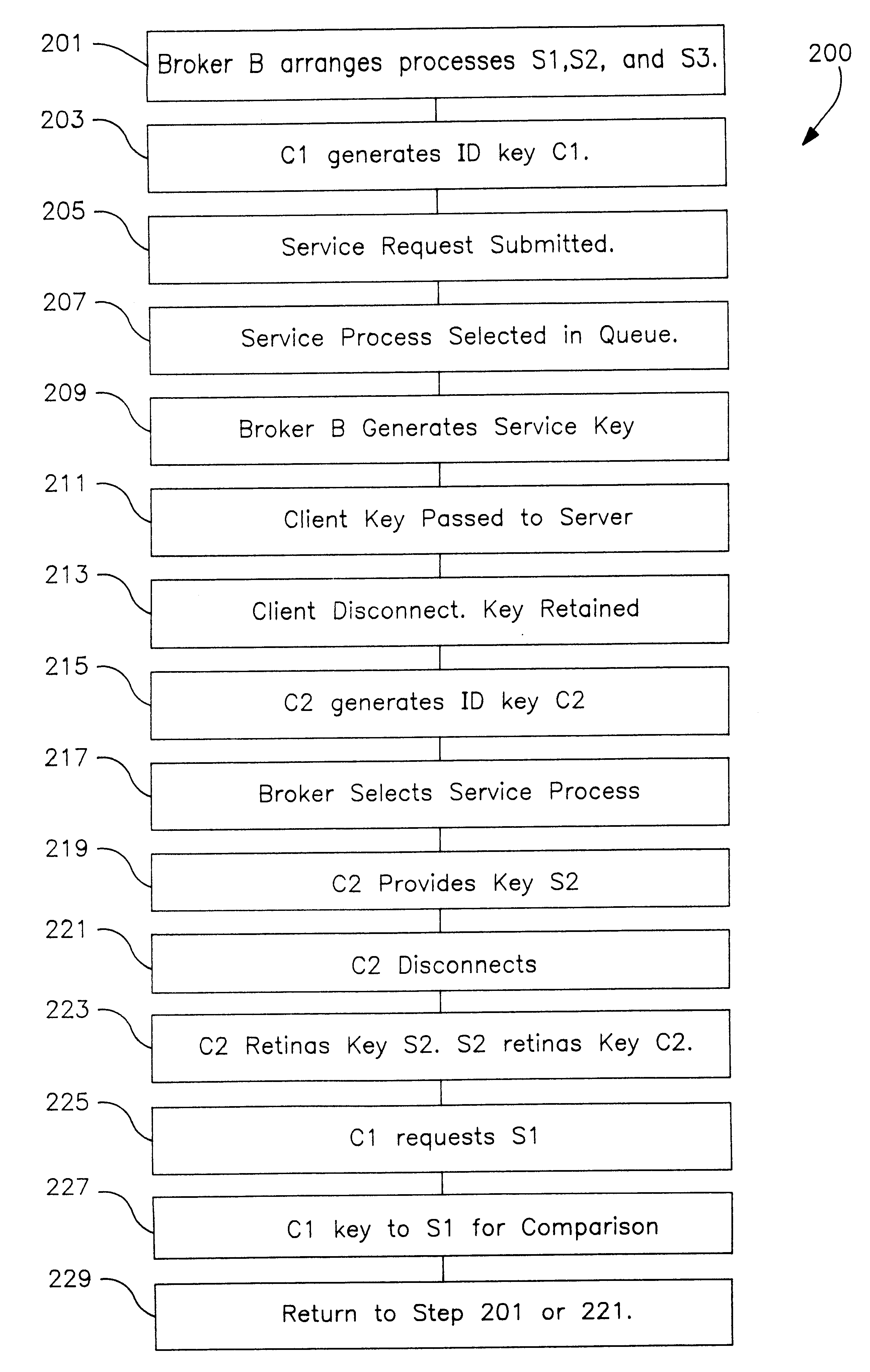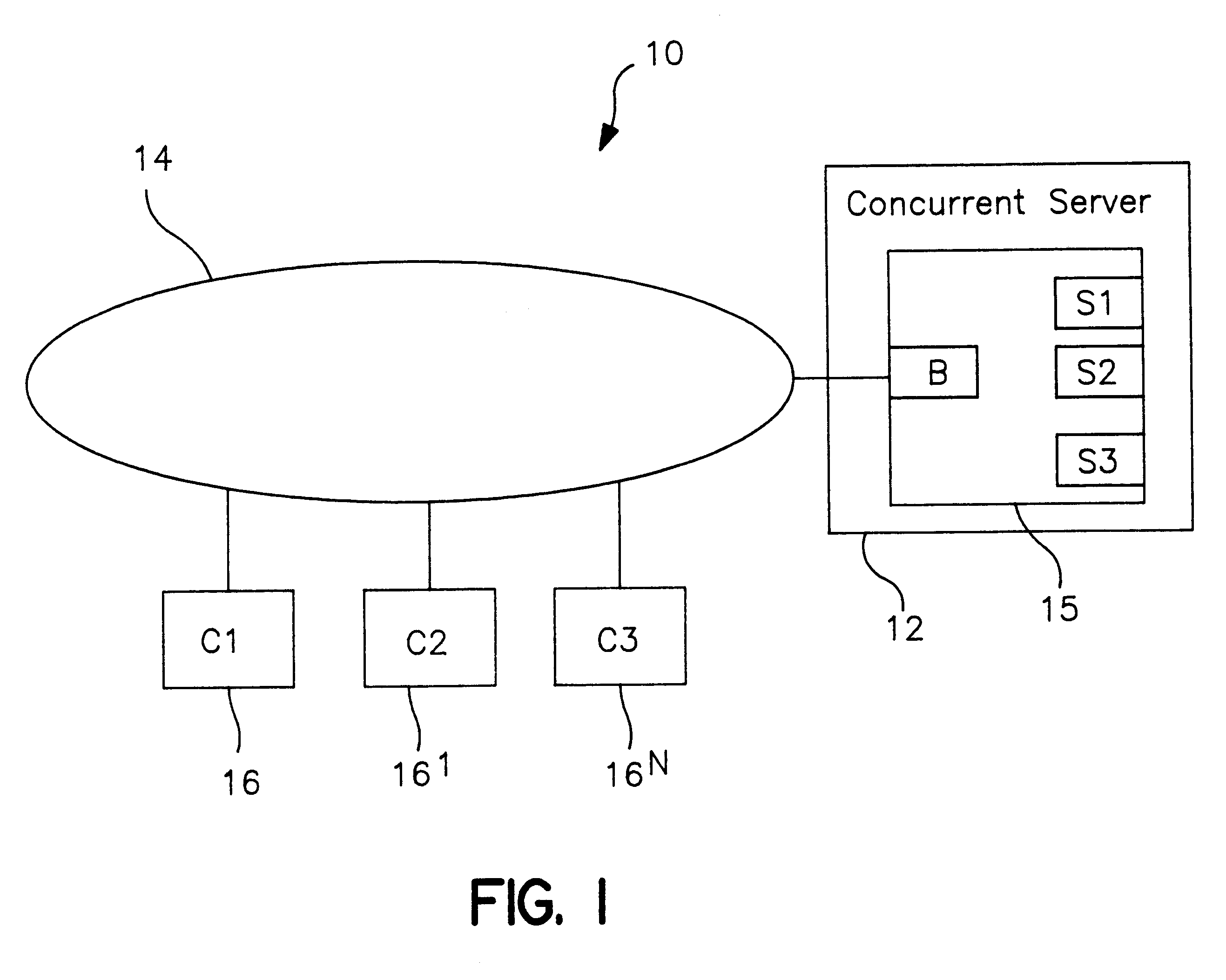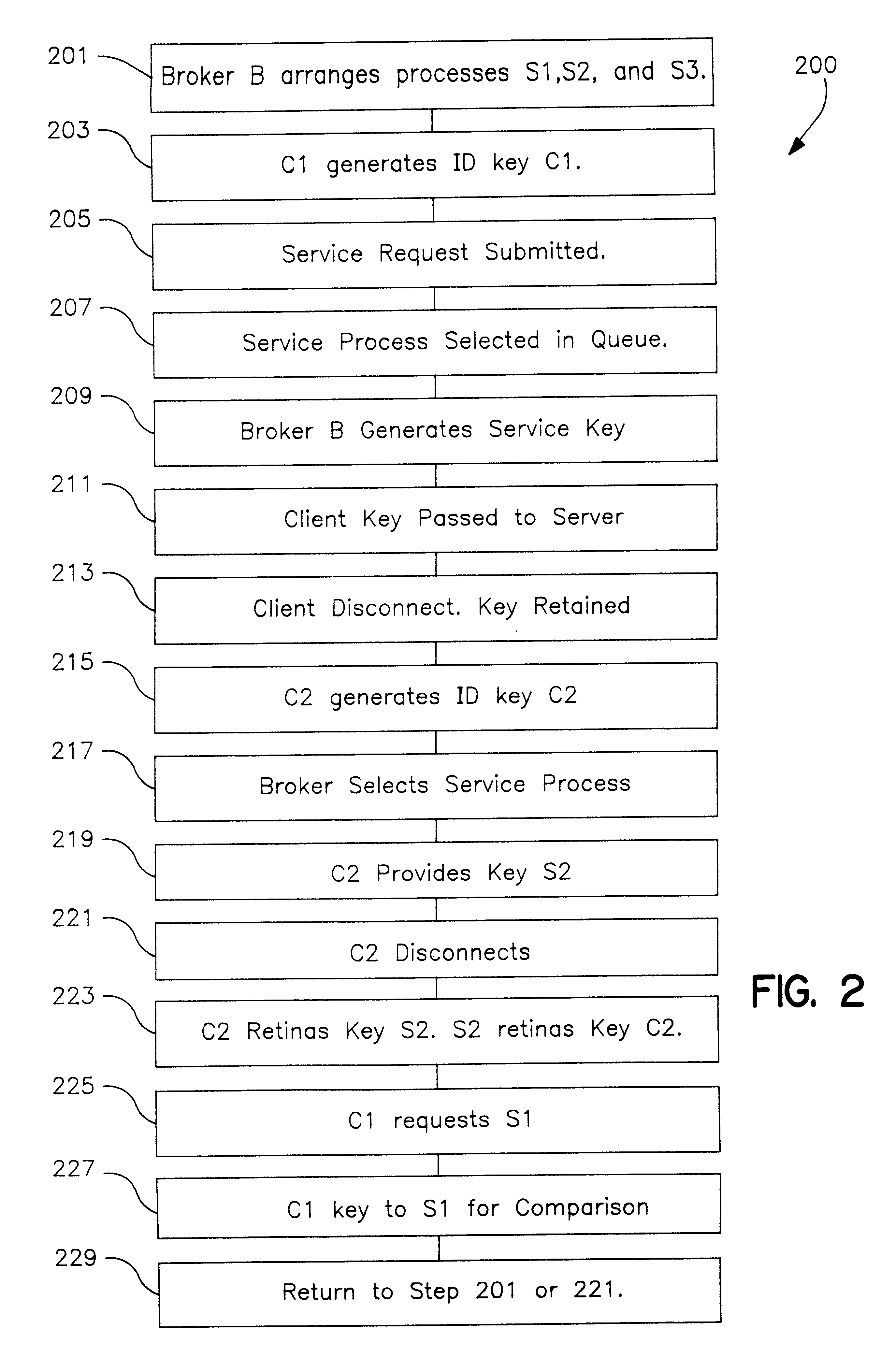Concurrent server and method of operation having client-server affinity using exchanged client and server keys
- Summary
- Abstract
- Description
- Claims
- Application Information
AI Technical Summary
Benefits of technology
Problems solved by technology
Method used
Image
Examples
Embodiment Construction
FIG. 1 discloses a concurrent server network 10 including a concurrent server 12 coupled to a network 14, e.g., token ring or distributed information system, and to client stations 16.sup.1 . . . 16.sup.N, e.g., PCs, workstations, etc. The concurrent server 12 is a gateway for providing its services to the clients 16.sup.1 . . . 16.sup.N. The server consists of a parent or broker process B and a number of child processes represented by servers S1, S2 and S3. The broker is configured to permit only up to N concurrently served clients, where N is a configurable positive integer. The broker is further configured to guarantee at least M available child servers, where M is a configurable positive integer, except when the number of concurrently served child servers is greater than N-M. The child servers are configured to terminate connection to a client after being successively connected to the same client R times, where R is a configurable positive integer. More specific details of concu...
PUM
 Login to View More
Login to View More Abstract
Description
Claims
Application Information
 Login to View More
Login to View More - R&D
- Intellectual Property
- Life Sciences
- Materials
- Tech Scout
- Unparalleled Data Quality
- Higher Quality Content
- 60% Fewer Hallucinations
Browse by: Latest US Patents, China's latest patents, Technical Efficacy Thesaurus, Application Domain, Technology Topic, Popular Technical Reports.
© 2025 PatSnap. All rights reserved.Legal|Privacy policy|Modern Slavery Act Transparency Statement|Sitemap|About US| Contact US: help@patsnap.com



